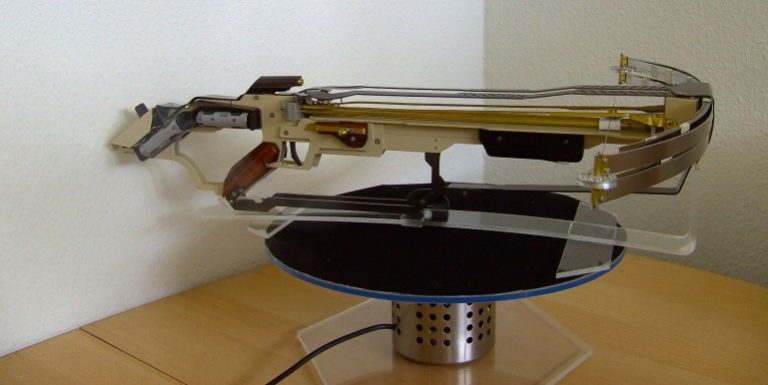SR&ED Eligible Zombie Apocalypse Prevention Series – Concurrent Development and SR&ED (Pt. 2 of 2)
Reference Article (>5 Years Old)Please note that the information herein may be outdated, links could be inactive, and policies discussed may have evolved. For the most current data, consult our latest publications. If you would like us to refresh this article as it is of interest to you, please contact us. |

A common misconception regarding SR&ED is that if another company is developing a similar product, they’ve beaten you to the punch and thus you cannot claim SR&ED for your own research. This is not always the case, and we’ve explored several (perhaps surprising) scenarios to illustrate this point.
We previously wrote an article about the wonderful development work conducted by Mr. Sprave on his Slingshot Channel. The article demonstrated how an SR&ED claim could have been written for his saw blade launcher, given the background of a zombie apocalypse.
Let’s now expand the situation, and note that across the ruined wasteland, another group (Blade Inc.) was also investigating weapons which could slice and dice zombie flesh. They developed a different product, the Blade Driver (Video). Their designs are relatively similar in that they both solved the problem of launching sawblades considerable distances. How does this affect the prospective SR&ED claims for Blade Inc. and Slingshot Corp.? Let’s look at a few different scenarios that compare the development of both companies.
SR&ED Case 1: Concurrent Development
In this scenario, both Blade Inc. and Slingshot Corp. have independently begun development on their designs at the beginning of the year. Both have roughly equal experience working with the physics of projectile motion, as well as the capabilities of the zombie horde. Over the course of the next year, they perfect their designs, but – perhaps of pride, prejudice or stupidity – do not collaborate in any way.
In this scenario, both companies can claim SR&ED on their development work, assuming they meet all the other requirements of the program (systematic investigation, etc.). This is true even if they end up solving the same technological uncertainties. The companies are working in isolation, and the SR&ED program always looks at the company’s own knowledge base. Moreover, the capabilities of both devices are different; as long the development overcame technological uncertainties the weaker product can still be claimed for SR&ED even if one product was strictly better than the other in every way. It all comes down to what activities were necessary for each company.
SR&ED Case 2: Slingshot First – Closed Source
In an alternate future, Slingshot Inc. made it to a hidden sanctuary first and had a full year of development time to build and test their creation against the zombie hordes. However, let’s say that Slingshot Inc. has decided to protect its investment by obfuscating some of its development. The entire slingshot is hidden within a large, tamper-proof box where it is impossible to see the inner-workings of the device. Blade Inc., who think that they can design a better saw-blade launcher, do not have access to this knowledge.
In this scenario, Blade Inc.’s knowledge base has not changed compared to SR&ED Case #1. Even though they see that this similar product is feasible, and exists, they have no new information as to how to solve the technological challenges. As such, they are also eligible to claim SR&ED as they work to develop a new weapon.
SRED Case 3: Slingshot First – Open Source
Finally, let’s suppose that in light of their impending doom, Slingshot Inc. has had an epiphany about greed and makes their knowledge open to everyone. As such, all of their design work, testing experiences, and everything that they developed with respect to the slingshot launcher is available.
In this scenario, if Blade Inc. wants to develop an improved version, this information becomes part of their knowledge base! Any time they spend replicating the same experiments would not be eligible for SR&ED.
To successfully claim SR&ED, Blade Inc. would have to show how their development work expanded their knowledge regarding sawblade dynamics beyond this initial, elevated level. Showing differences between their design/development and the slingshot design is also useful. Perhaps they could focus on the need to fire smaller blades, where the dowel approach wouldn’t be feasible. Perhaps they had higher accuracy requirements (e.g. the laser sight was needed to increase accuracy to +/- 1 cm to target vulnerable areas), or a higher minimum impact speed they needed to achieve. These are features, but the company will often require technological advancement in order to achieve these new targets.
All of these differences help define the project and establish what additional technological challenges the new design would have to overcome. If these differences can be shown, then a claim to would be much stronger.
SR&ED Eligibility for Anti-Zombie Technology
There you have it, a few quick scenarios to think about when you are considering applying for the SR&ED program. By the program’s own regulations, everything is compared to your own business context. The proliferation of free open-source knowledge on the Internet makes it essential that every company perform an initial search of available technologies. If a similar, publicly available technology exists, you must be able to explain why it was not sufficient for your project requirements in order to satisfy the SR&ED criteria.
Wondering if your unconventional project is SR&ED eligible?
Connect With Us!
Share your thoughts by commenting below or joining the conversation on our LinkedIn page, Facebook page, or via Twitter.
This article is presented only for informational purposes and does not constitute legal advice. You should retain legal counsel if you require legal advice regarding your individual situation.